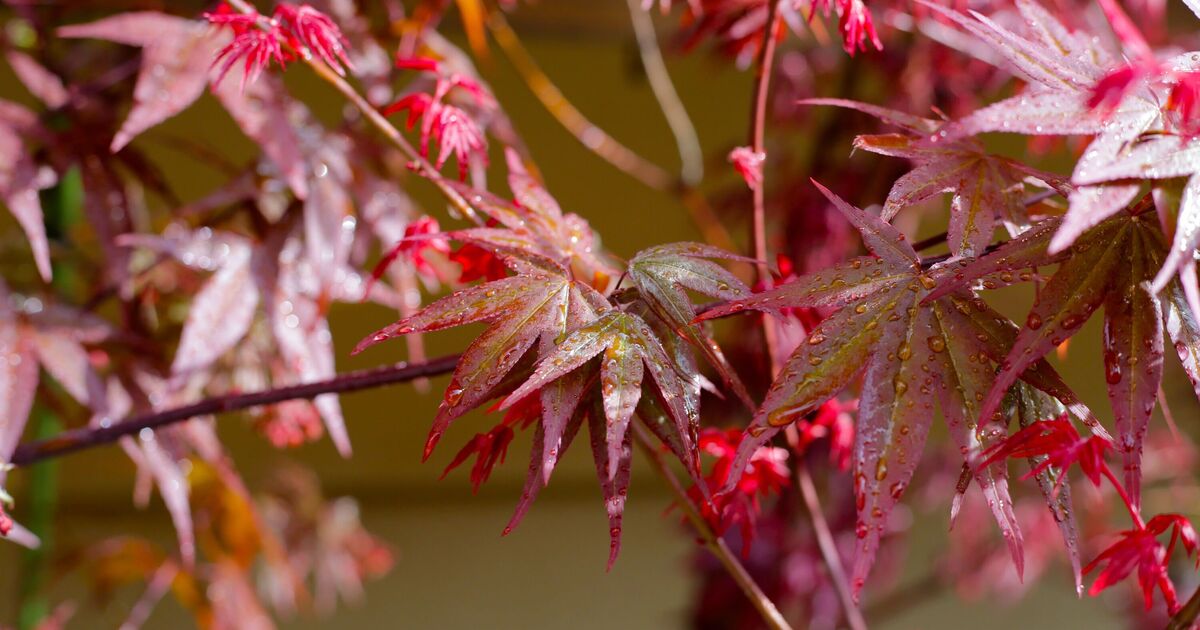Pruning aims to remove dead, diseased and damaged branches from a plant to promote new, healthy growth.
Whilst it may seem like a straightforward task, different plants need to be pruned at different times of the year.
Acers, which provide the garden with gorgeous shades of red and orange, need to be pruned to keep their neat shape.
Autumn is the time to prune acers because they tend to bleed heavily when pruned in active growth.
This means anywhere from the end of September to February is ideal to make sure the plant is dormant.
The Royal Horticultural Society (RHS) said: “Japanese maples naturally have an elegant shape and, when bought, usually require very little pruning other than removing any winter dieback at the end of the shoots.
“If young trees produce a strong vertical shoot this can be pruned back to a side branch in autumn.
“Japanese maples are best pruned when fully dormant, as maples bleed sap from pruning cuts, weakening the tree.”
When pruning, it is best to keep it to a minimum as the most “graceful shape” comes from the tree being allowed to develop naturally.
The RHS added: “Simply remove badly placed or crossing shoots to encourage a good framework of branches to grow.
“Where you do need to reduce height and width, follow long branches back to a side branch and prune it out at this point.
“This is not necessary on prostrate-growing trees because they should be allowed to spread naturally to gain the best effect.
“Always prune back to a well-placed side branch. Do not leave a stub at this is often prone to decay and dieback.”
When pruning, gardeners are advised to make sure they use clean and disinfected secateurs to make clean cuts.
For young trees, prune them to around 16 inches in the first winter, and then in the second winter, prune out dead shoots while shortening the main ones.
In the third winter, remove very low branches and shoots growing into the centre of the tree.
For gardeners who wish to plant acers, autumn is also the best time to do so, according to the experts.












